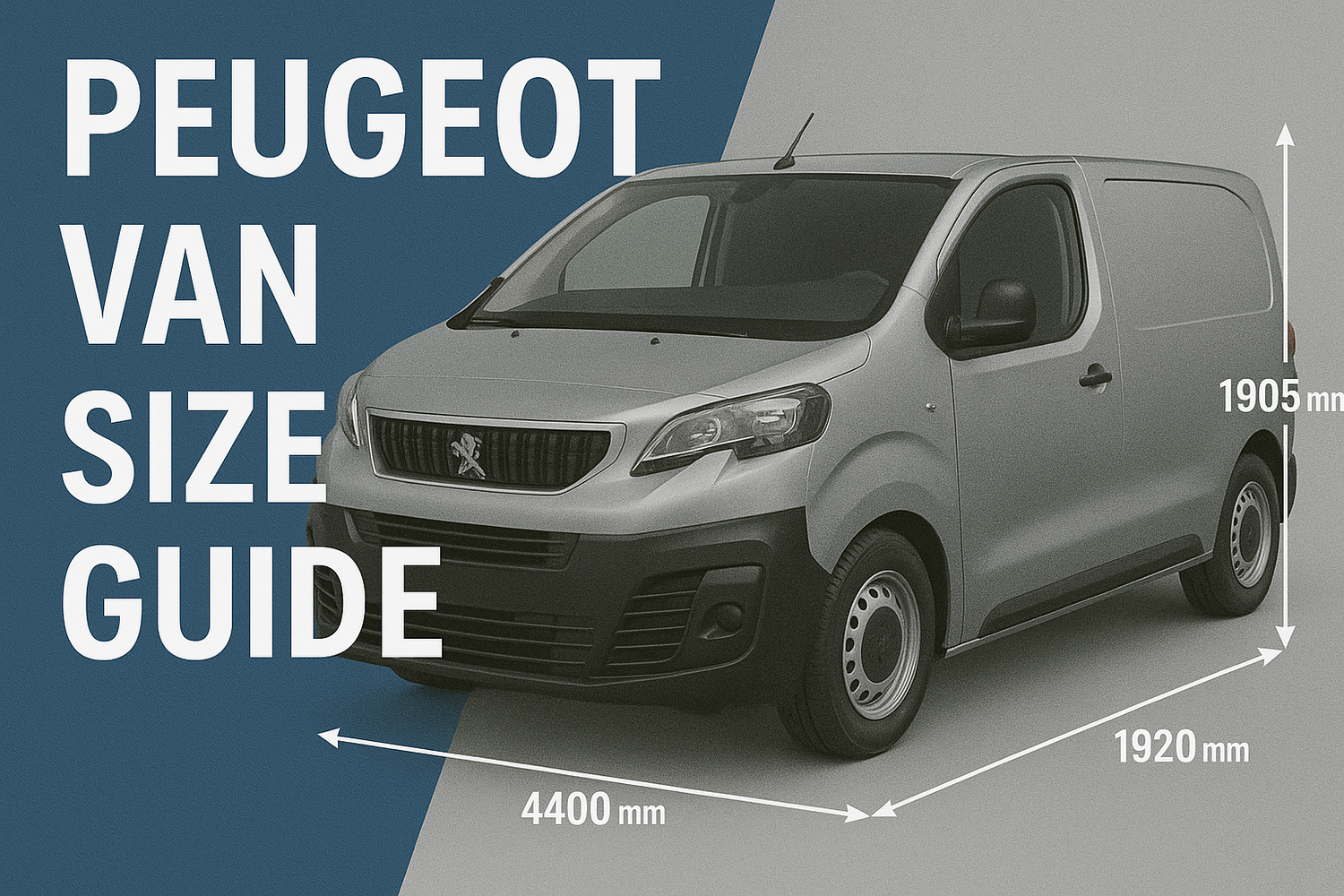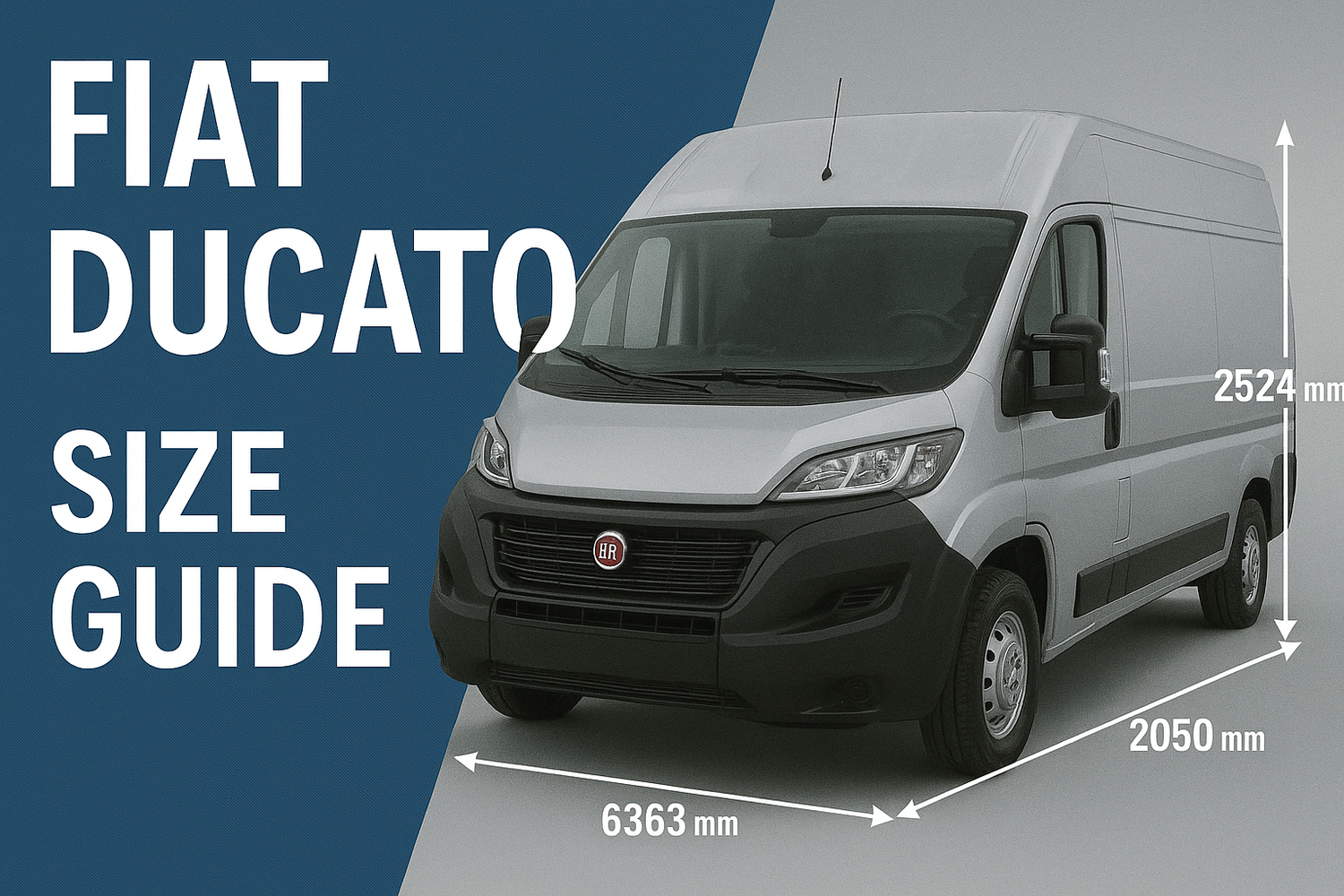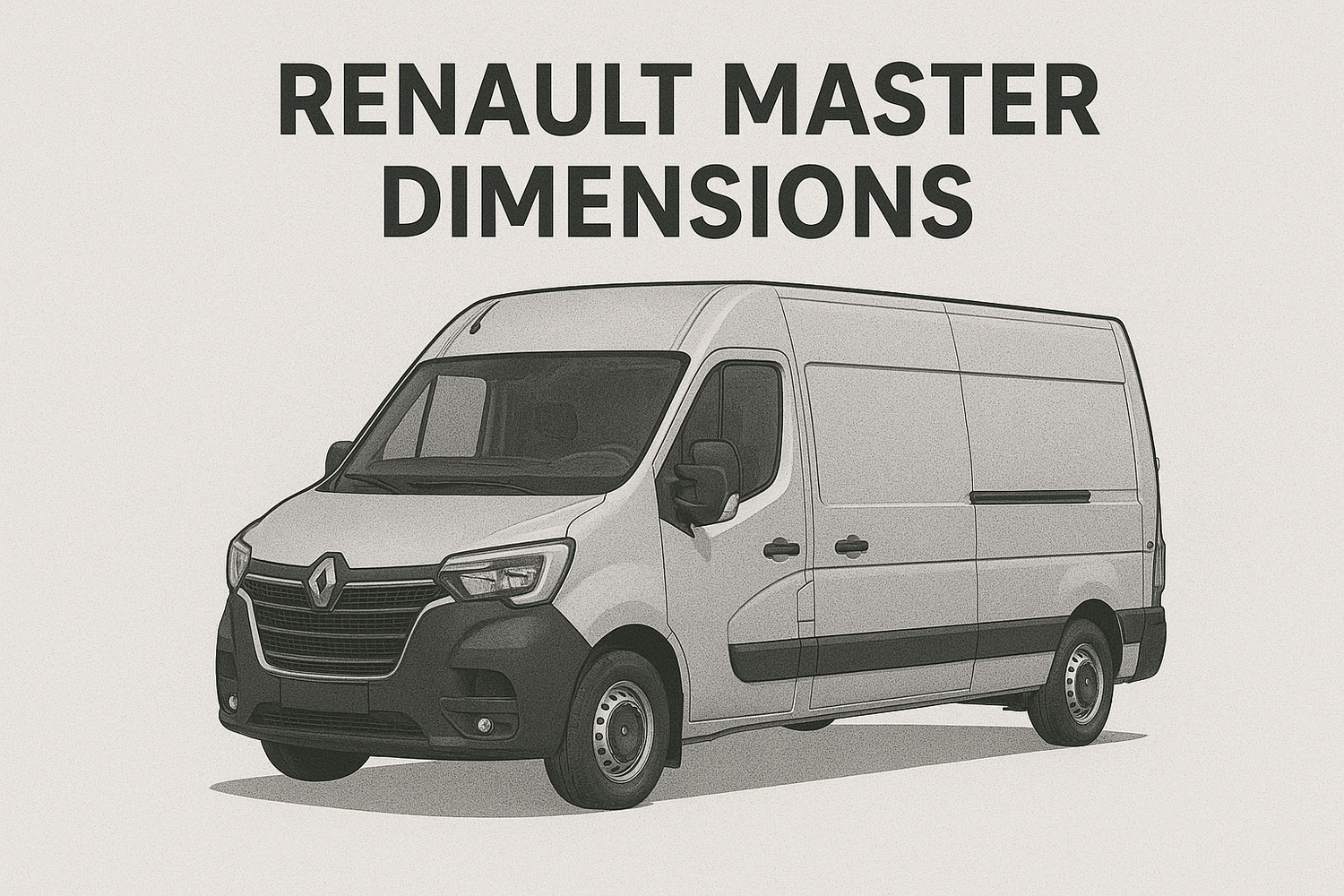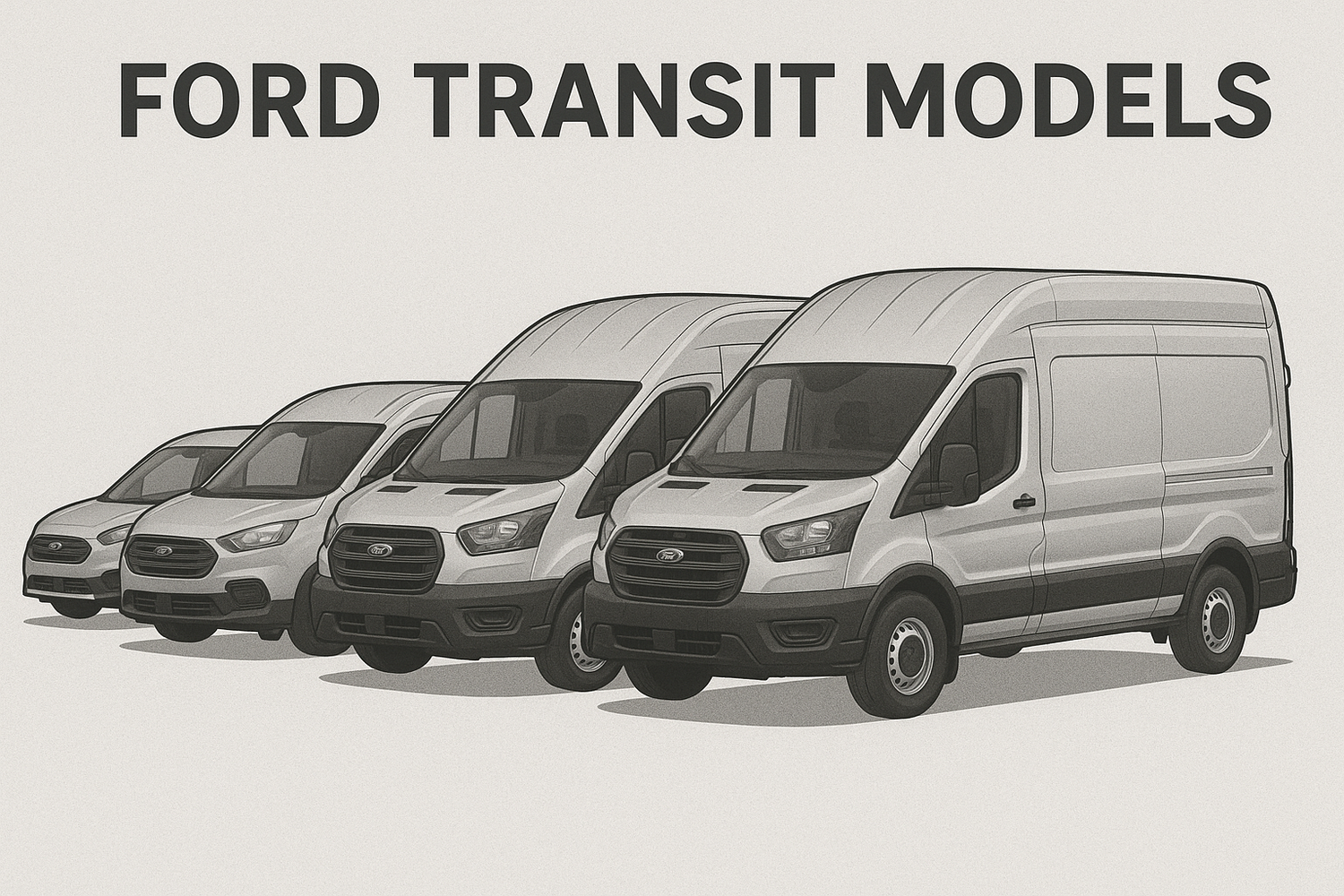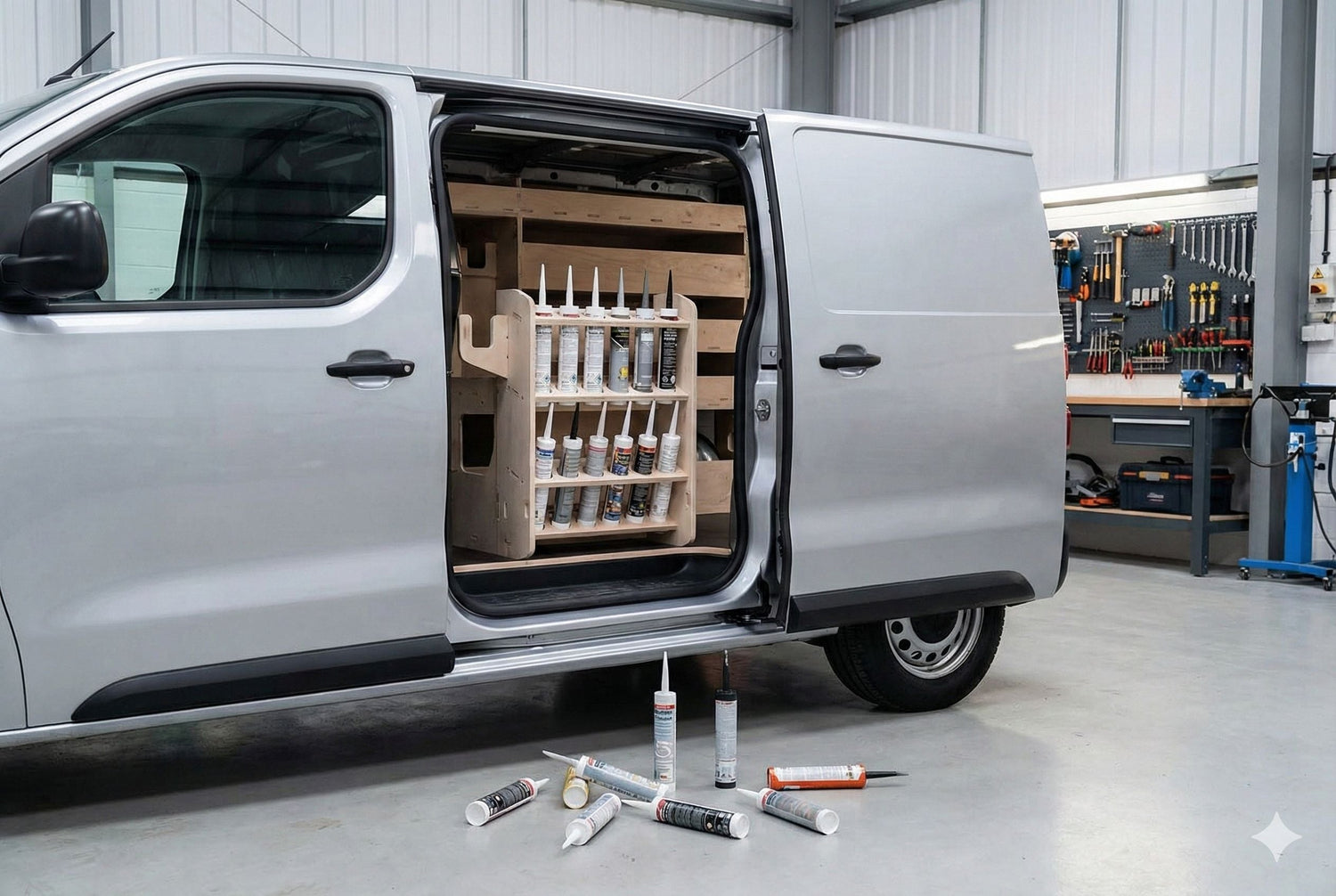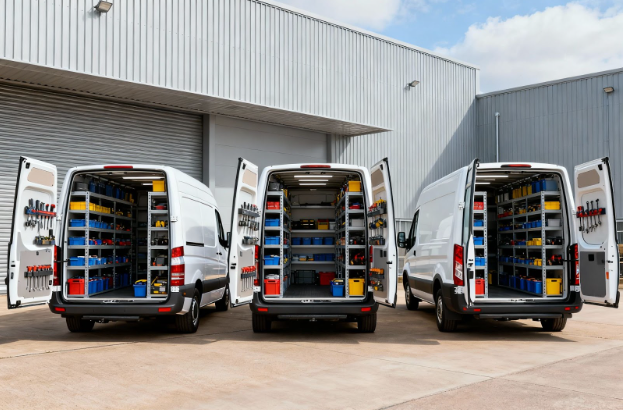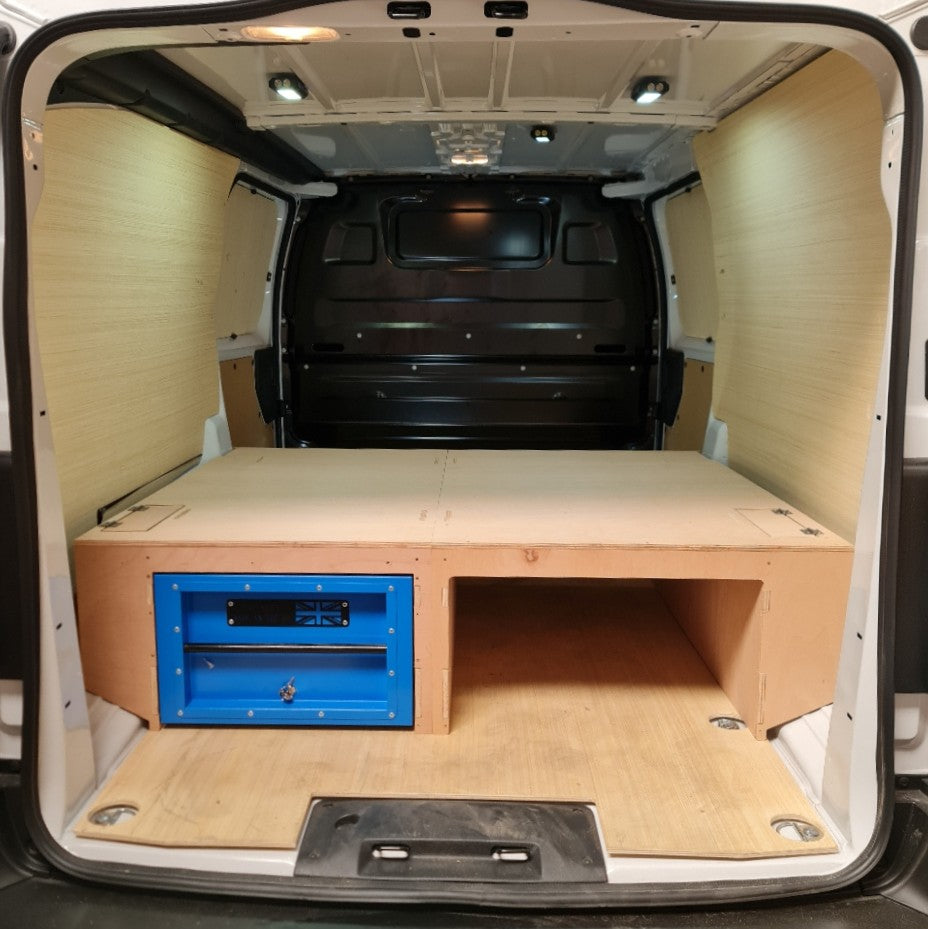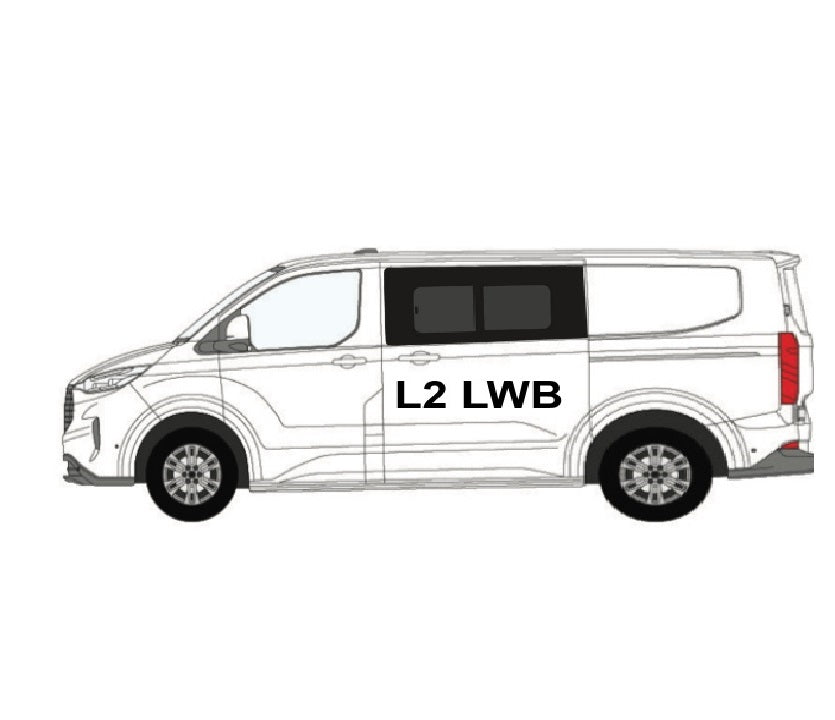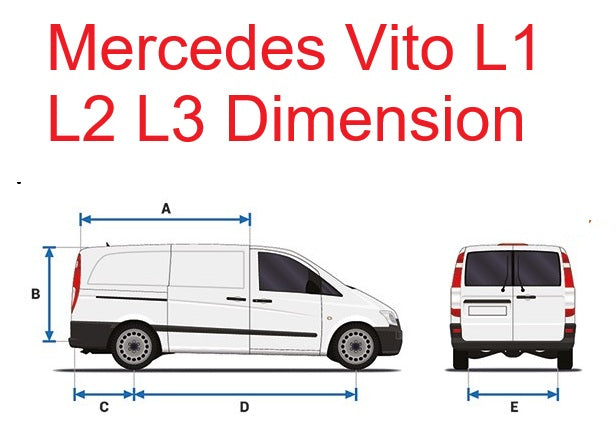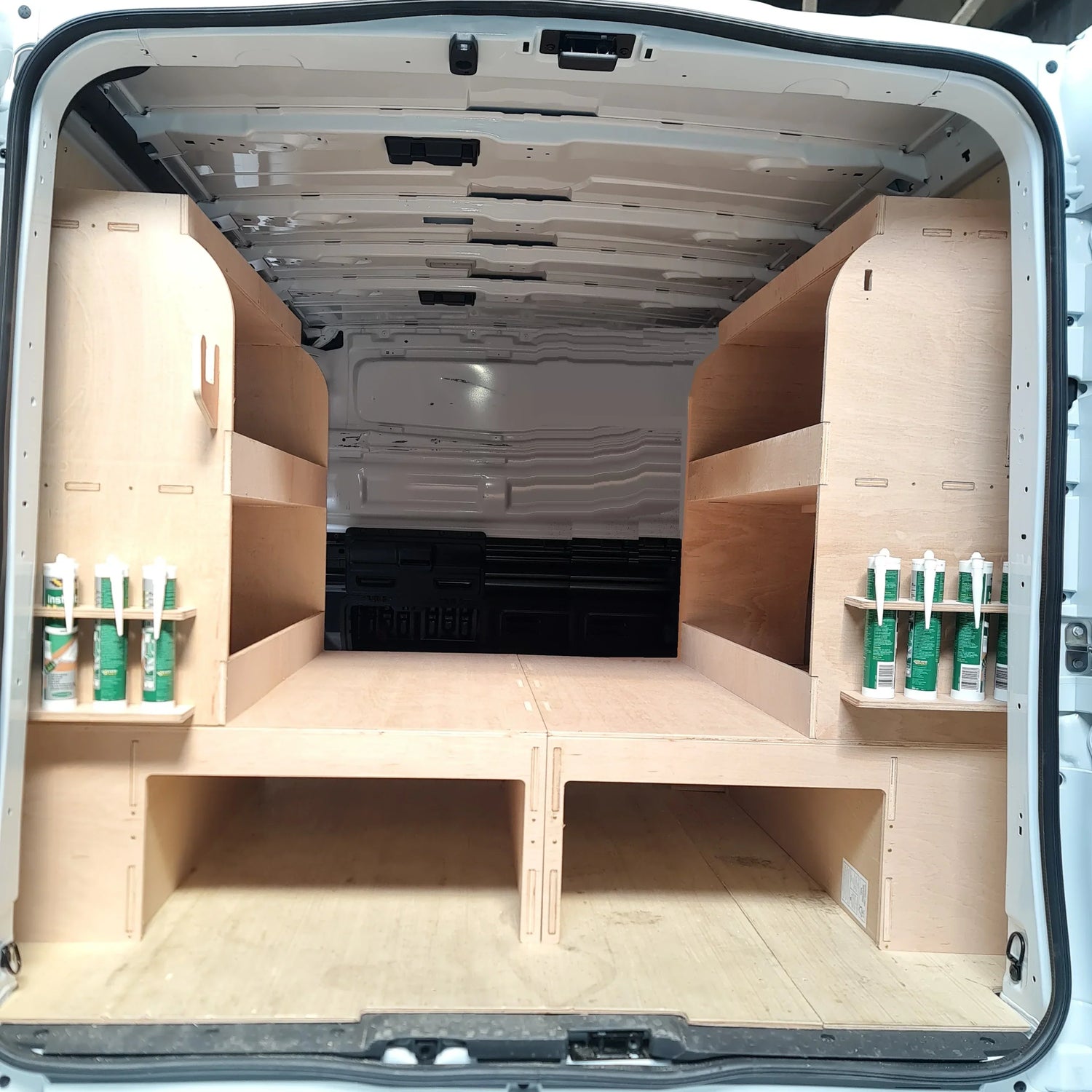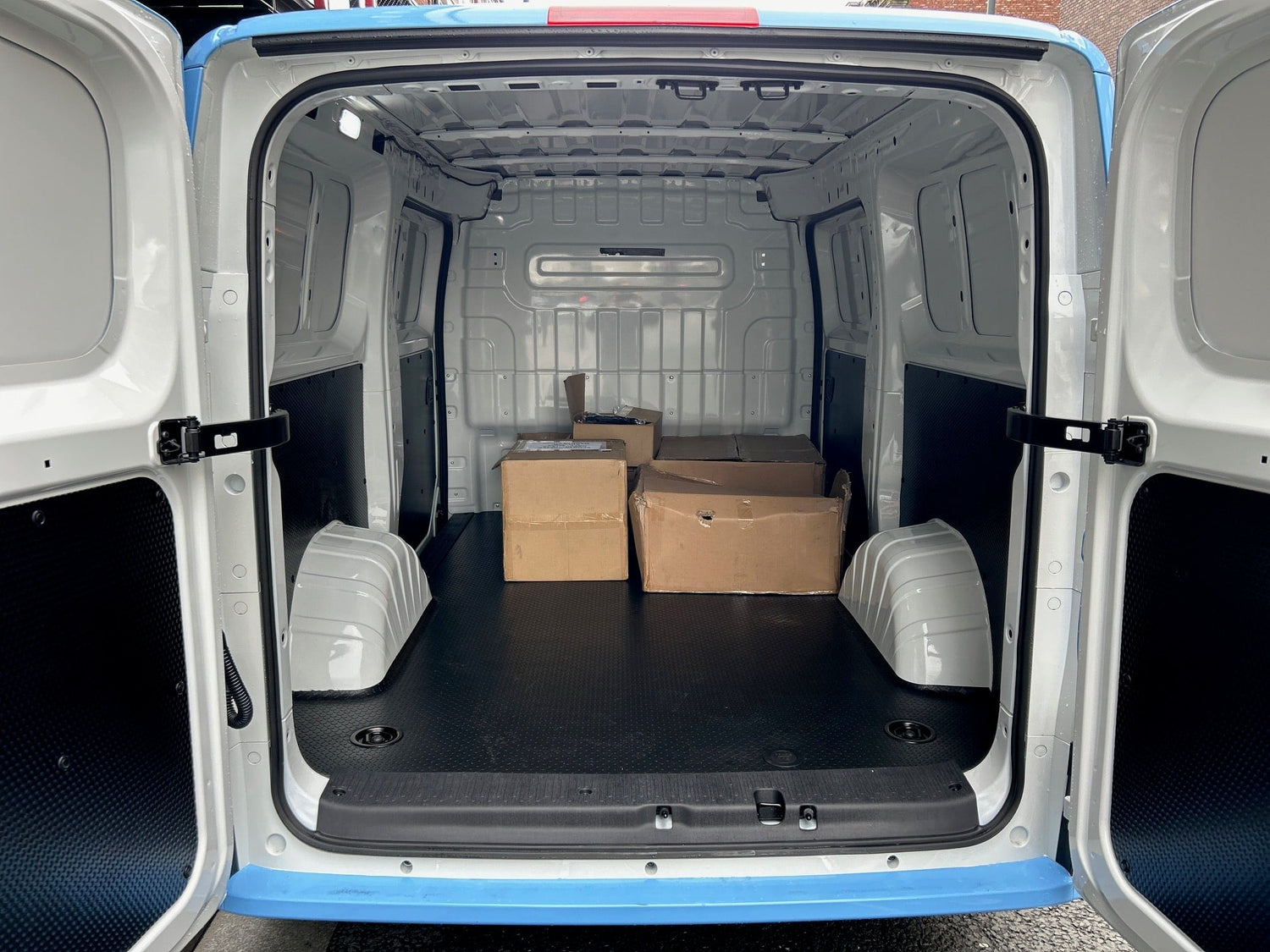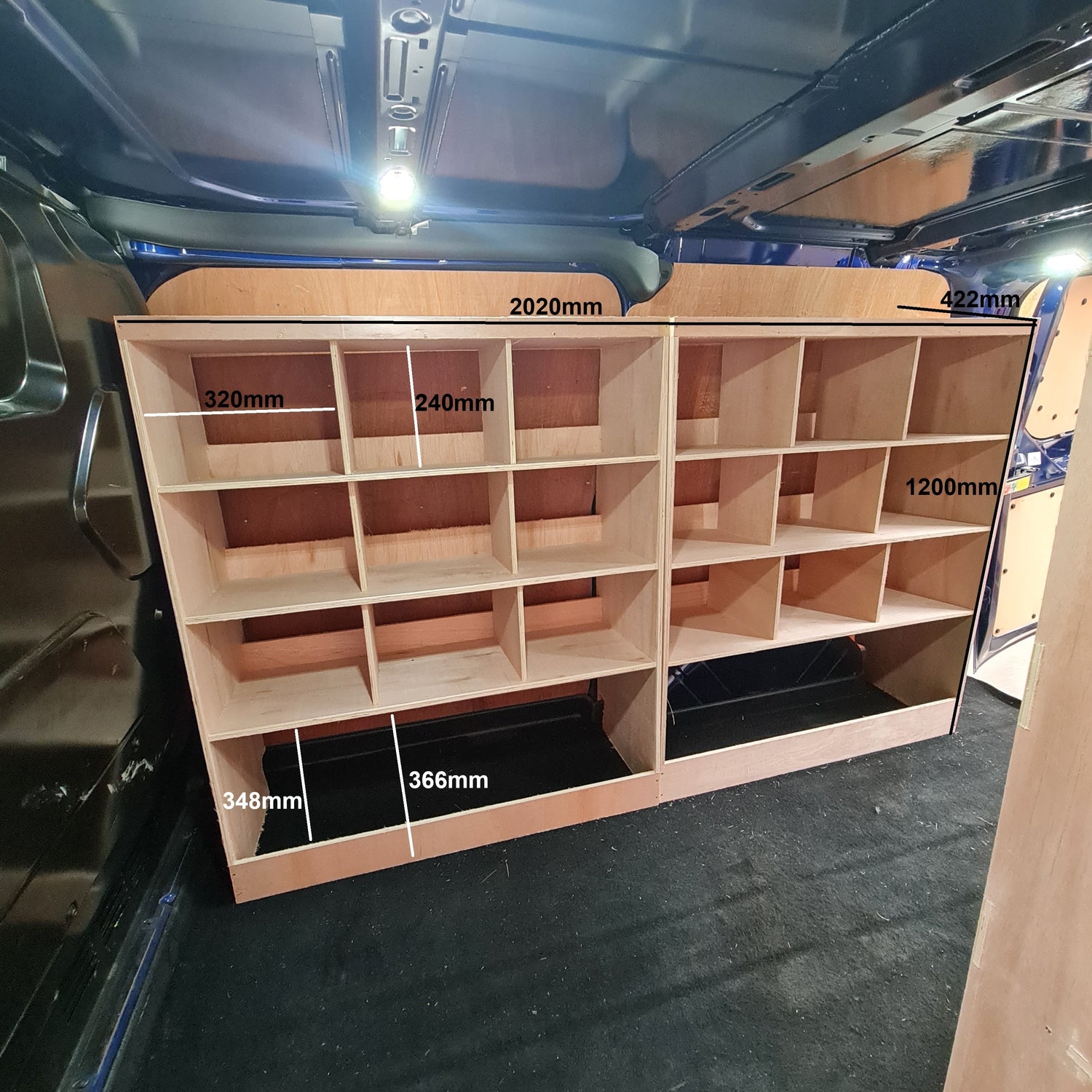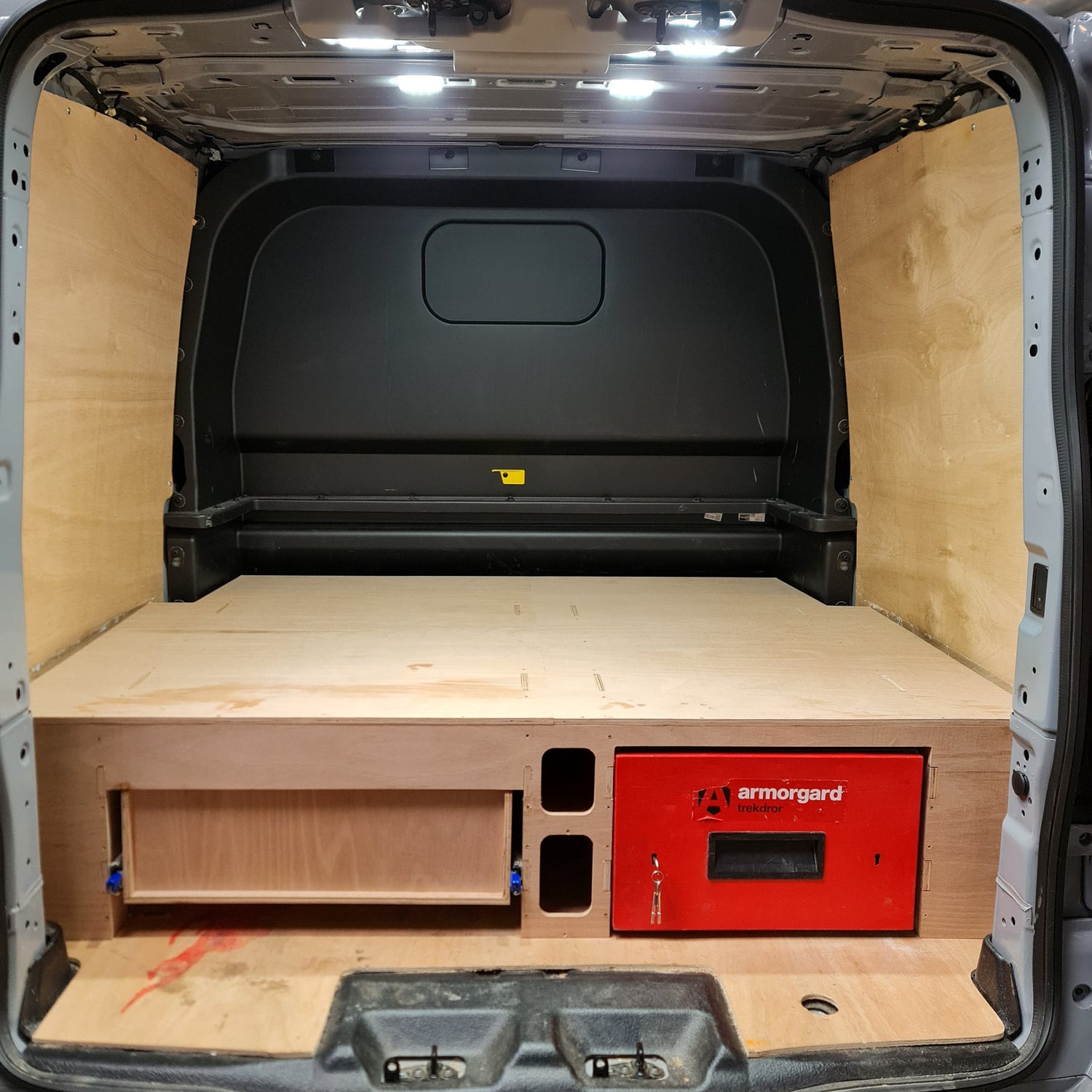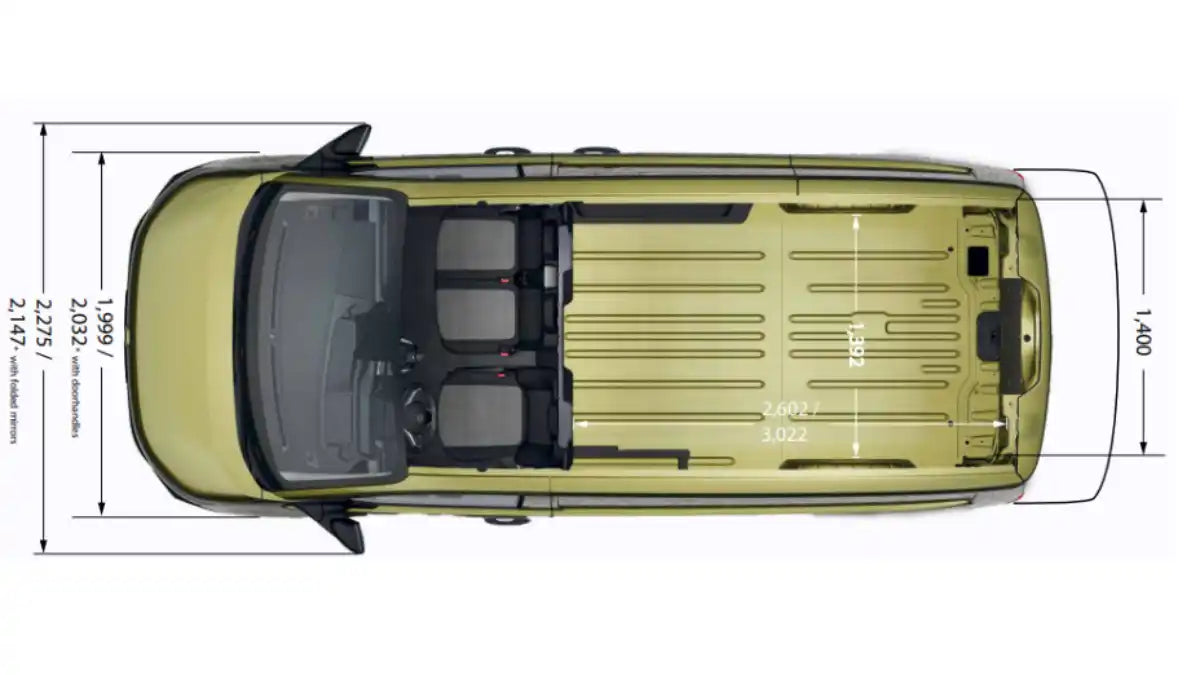Key Takeaways
-
Proper weight distribution in work vans improves safety, handling, and fuel efficiency
-
Strategic loading techniques can prevent premature vehicle wear and potential accidents
-
Keeping heavy items low and centered in the vehicle significantly enhances stability
-
Purpose-built storage systems are key to maintaining optimal weight distribution
-
Regular weight checks and adjustments are essential as cargo and tools change
Explore our van racking solutions
Introduction: Why Weight Distribution Matters in Your Work Van
For tradespeople, service technicians, and delivery professionals, work vans serve as mobile workshops, inventory storage, and essential business tools. While most van operators understand the importance of not exceeding payload capacity, fewer recognize the critical role that proper weight distribution plays in vehicle performance, safety, and longevity.
Improper weight distribution in work vans contributes to numerous issues: compromised handling, increased stopping distances, excessive tire and brake wear, reduced fuel efficiency, and even potential legal liabilities. Research from fleet management experts indicates that optimizing weight distribution can extend vehicle life by up to 20% while significantly reducing accident risks.
This comprehensive guide explores the principles of weight distribution in work vans, practical strategies for optimizing load placement, and storage solutions designed to maintain proper balance. Whether you operate a single van or manage an entire fleet, these insights will help you maximize safety, efficiency, and vehicle longevity through proper weight management.
Understanding Weight Distribution in Work Vans
The Physics Behind Weight Distribution
Weight distribution affects virtually every aspect of vehicle performance through basic physics principles:
-
Center of gravity: The theoretical point where all the weight of your van and its contents is concentrated
-
Weight transfer: How weight shifts during acceleration, braking, and cornering
-
Axle loading: How weight is distributed between front and rear axles
-
Side-to-side balance: The distribution of weight across the width of the vehicle
When weight is improperly distributed, these physical forces work against safe vehicle operation. A properly balanced van maintains a center of gravity that's low and centered, with weight appropriately distributed between axles according to manufacturer specifications.
Common Weight Distribution Challenges
Work van operators frequently encounter these distribution challenges:
Uneven Side-to-Side Loading
Many tradespeople install storage on only one side of their van, creating a permanent weight imbalance that affects cornering stability and causes uneven tire wear. Research indicates that side-to-side weight differences exceeding 10% can reduce tire life by up to 25%.
Rear-Heavy Configuration
Placing too much weight behind the rear axle creates a pendulum effect that reduces front-wheel traction and steering responsiveness. This configuration is particularly dangerous during emergency maneuvers or in adverse weather conditions.
Top-Heavy Loading
Stacking heavy items on high shelves raises the vehicle's center of gravity, dramatically increasing rollover risk. Studies show that raising a vehicle's center of gravity by just 10% can increase rollover probability by as much as 40% during evasive maneuvers.
Front-End Overloading
Excessive weight over the front axle compromises braking performance and accelerates wear on front suspension components. Many operators inadvertently create this condition by storing heavy tools and equipment in the cab area.
Safety Implications of Poor Weight Distribution
Handling and Stability Concerns
Improper weight distribution significantly affects how your van handles in various driving conditions:
-
Crosswind sensitivity: Unbalanced vans are more susceptible to being pushed by strong crosswinds
-
Cornering stability: Poor weight distribution increases body roll and reduces cornering grip
-
Emergency maneuver capability: Unbalanced vans perform poorly during sudden lane changes or obstacle avoidance
-
Wet weather traction: Improper weight balance can reduce tire contact patch effectiveness in rain or snow
A van with properly distributed weight responds more predictably in all driving situations, giving the driver greater control and reducing accident risk.
Braking Performance Issues
Weight distribution directly affects stopping capability:
-
Braking distance: Poorly distributed loads can increase stopping distances by 15-30%
-
Brake fade resistance: Overloaded front brakes heat up faster, reducing effectiveness on long downgrades
-
Anti-lock brake system performance: Extreme weight imbalances can reduce ABS effectiveness
-
Emergency braking stability: Uneven weight distribution can cause pulling to one side during hard stops
Fleet safety studies have found that vans with optimized weight distribution average 20% shorter stopping distances compared to poorly loaded vehicles of the same weight.
Vehicle Wear and Maintenance Impact
Beyond safety concerns, weight distribution affects vehicle longevity and operating costs:
-
Suspension component wear: Uneven loading accelerates wear on springs, shocks, and bushings
-
Tire wear patterns: Poor distribution causes uneven tire wear, reducing tire life by up to 30%
-
Drivetrain stress: Improper weight placement increases stress on transmission, differential, and driveshafts
-
Structural fatigue: Consistent improper loading can lead to premature frame and body fatigue
Industry maintenance data shows that properly balanced vans typically require 15-25% less in suspension-related repairs over their service life.
Practical Strategies for Optimizing Weight Distribution
Strategic Loading Principles
Follow these fundamental principles when loading your work van:
-
60/40 rule: Aim for approximately 60% of the weight over the front axle and 40% over the rear for most front-wheel-drive vans (adjust according to manufacturer recommendations)
-
Center-heavy configuration: Position the heaviest items low and centered in the vehicle, directly over or between the axles
-
Balanced side-to-side loading: Distribute weight evenly from left to right
-
Secured cargo: Use appropriate tie-downs to prevent load shifting during travel
-
Regular load assessment: Reassess weight distribution as items are added or removed throughout the workday
These principles create a foundation for safe load management in any work van configuration.
Positioning Heavy Equipment and Materials
Specific placement strategies for common work van cargo:
-
Large power tools: Position directly over the axles when possible, never behind the rear axle
-
Material stocks: Distribute evenly across the floor space rather than concentrating in one area
-
Liquids and chemicals: Place centered and as low as possible to prevent sloshing effects
-
Parts inventory: Distribute across multiple storage areas rather than concentrating weight
-
Battery-powered equipment: Store batteries in a central, low position due to their significant weight
Many operators create designated "heavy zones" in their vans with reinforced shelving specifically designed for concentrated weights.
Using Weight as a Strategic Advantage
Properly distributed weight can actually improve vehicle performance:
-
Winter traction: Strategic weight placement over drive wheels can improve snow and ice traction
-
Wind resistance: Properly balanced loads reduce sensitivity to crosswinds
-
Fuel efficiency: Optimized weight distribution can improve fuel economy by 5-10% compared to poorly distributed loads
-
Ride quality: Even weight distribution improves suspension performance and ride comfort
Professional fleet operators often create seasonal loading guidelines that account for changing weather conditions and driving challenges.
Storage Solutions for Improved Weight Distribution
Purpose-Built Racking Systems
Modern van storage systems are designed with weight distribution in mind:
-
Dual-sided configurations: Balanced shelving and storage on both sides of the cargo area
-
Low-profile heavy storage: Specialized low shelving for concentrated weights
-
Lightweight materials: Aluminum and composite systems that minimize the storage system's own weight
-
Strategic anchor points: Mounting systems designed to distribute loads to structural members
-
Adjustable components: Modular systems that can be reconfigured as cargo needs change
Professional van upfitters report that purpose-designed storage systems can improve weight distribution by up to 40% compared to generic shelving or DIY solutions.
Drawer Systems and Floor-Level Storage
Lower storage options maximize stability:
-
Drawer systems: Heavy-duty drawers that keep tools and parts low in the vehicle
-
Under-shelf bins: Utilize space beneath shelving for dense items
-
Floor anchoring tracks: Systems that secure cargo directly to the floor in optimal positions
-
Wheel well storage: Purpose-built containers that utilize otherwise wasted space
-
False floor systems: Raised floors with integrated storage that keep heavy items low
These low-profile solutions maintain a lower center of gravity while maximizing organization and accessibility.
Custom vs. Standard Solutions
Choosing the right storage approach:
-
Standard systems: Pre-designed solutions that work well for common trades and applications
-
Custom configurations: Tailored systems designed around specific equipment and material needs
-
Hybrid approaches: Standard components arranged in custom configurations
-
Progressive installation: Starting with basic systems and adding components as needs evolve
-
Weight mapping: Professional assessment services that analyze your specific cargo requirements
Industry data suggests that professionally designed storage systems typically reduce load-related incidents by 30-45% compared to improvised storage methods.
Conclusion: Implementing Your Weight Distribution Strategy
Optimizing weight distribution in your work van is not merely a theoretical exercise—it's a practical approach to improving safety, extending vehicle life, enhancing performance, and reducing operating costs. The principles outlined in this guide provide a framework for developing distribution practices tailored to your specific vehicle and business needs.
Begin implementing improved weight distribution by:
-
Assessing your current loading patterns and identifying potential imbalances
-
Investing in purpose-designed storage systems that facilitate proper weight placement
-
Training all drivers and staff on proper loading techniques and weight distribution principles
-
Establishing regular weight monitoring procedures
-
Developing loading templates for common job types and materials
Remember that weight distribution is not a one-time consideration but an ongoing process that requires attention as your cargo, equipment, and business needs evolve. The time invested in optimizing how you load your work van pays dividends through improved safety, reduced maintenance costs, and enhanced operational efficiency.

